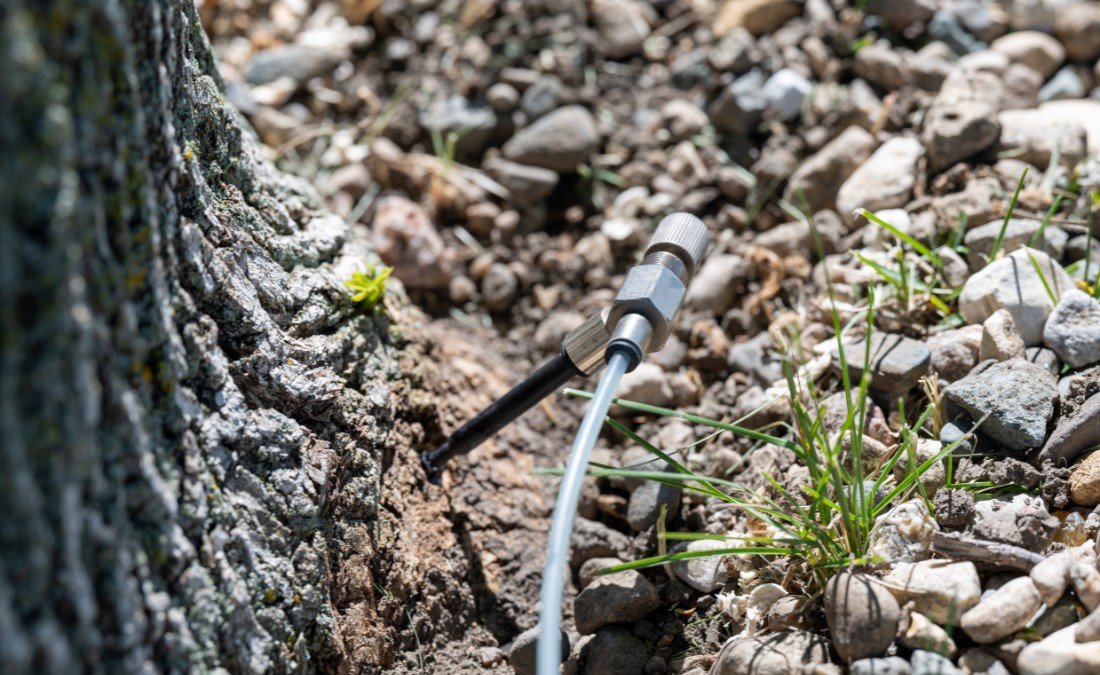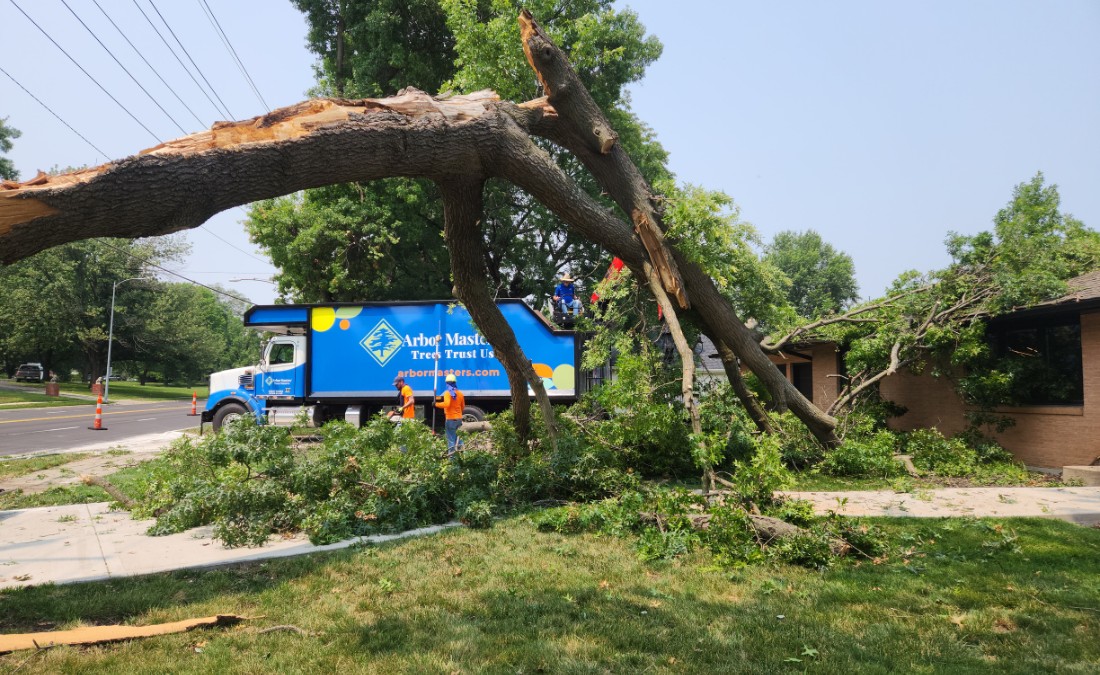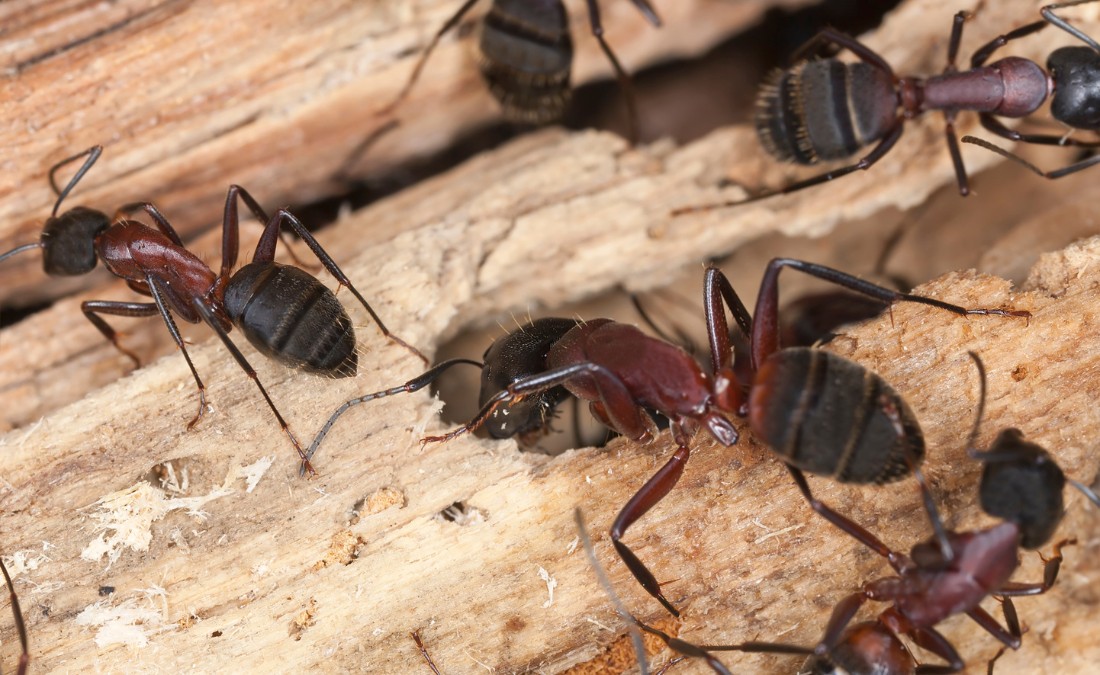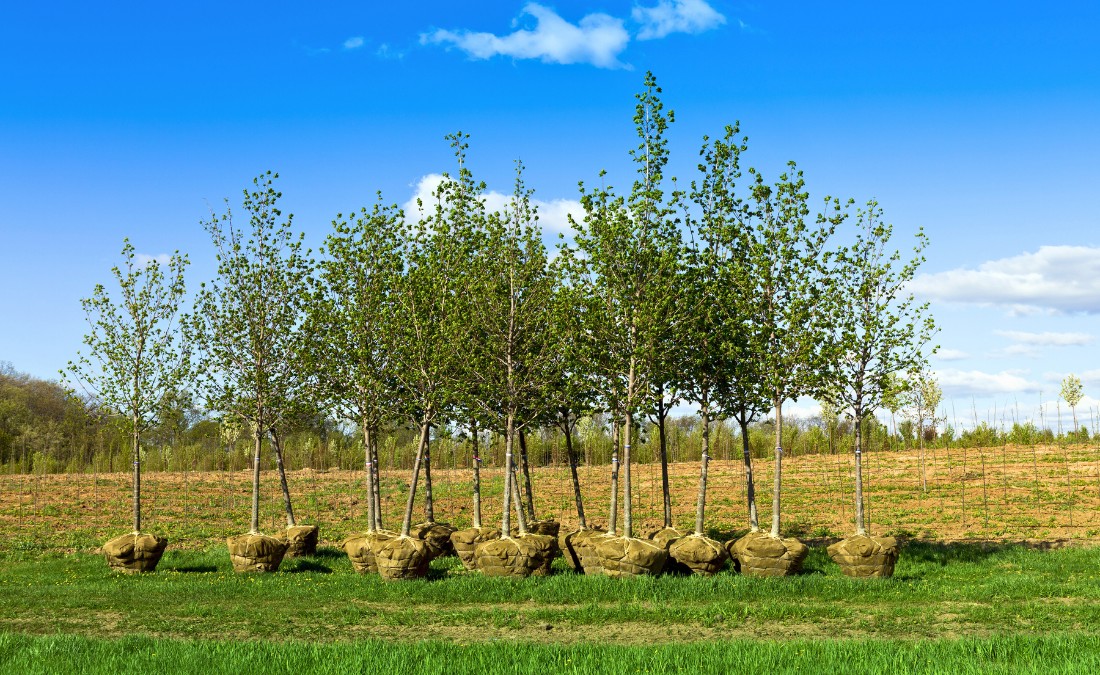Fall Leaf Colors in the Midwest: Why Trees Change Color and When to Expect It
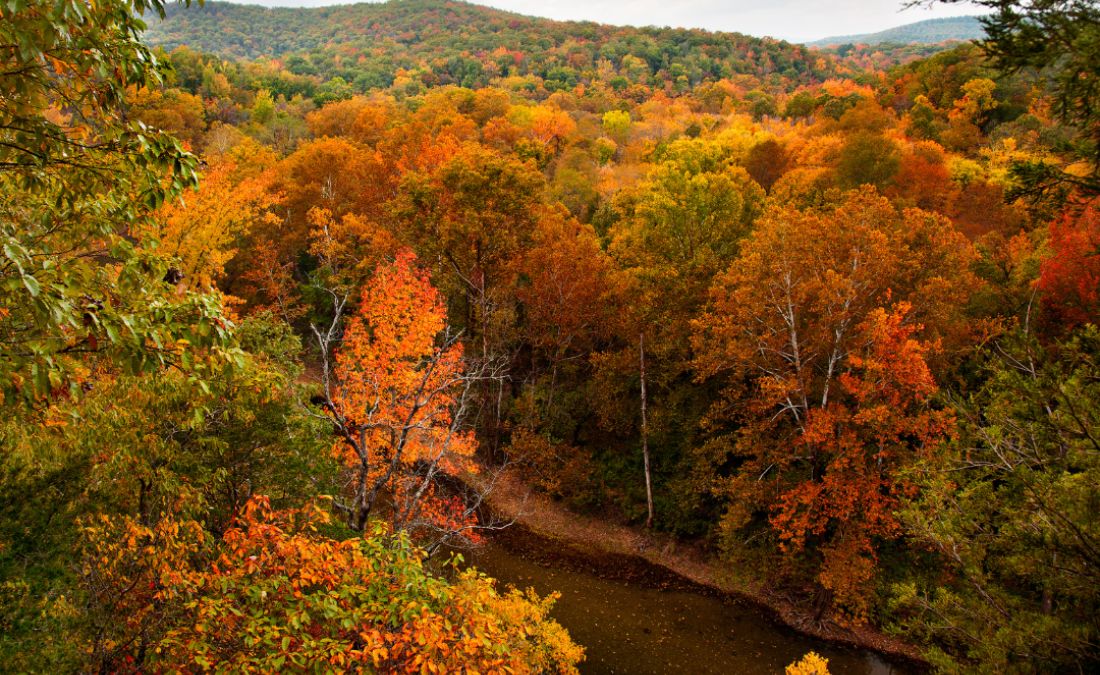
In this blog, we dive deep into the science behind how and why fall color change happens, give some examples of our favorite tree transformations, look into factors that may hurt your trees from joining in the spectacle and explore our own Midwest and Ozarks regions’ striking transformations.
We often take the beauty around us every day for granted. Each fall, we watch as trees paint themselves with breathtaking shades of gold, red, orange and purple. Have you ever stopped to ask yourself how and why trees put on this wonderful show each year?
In this blog, we dive deep into the science behind how and why fall color change happens, give some examples of our favorite tree transformations, look into factors that may hurt your trees from joining in the spectacle and explore our own Midwest and Ozarks regions’ striking transformations.
Why do Tree Leaves Change Color in the Fall?
Understanding the Science behind the Transformation
Fall color changes are controlled by pigments present in the leaves, which help plants in photosynthesis and overall growth and development. Chlorophyll is the dominant pigment responsible for the green color of leaves and their ability to photosynthesize.
During the summer, chlorophyll is produced in substantial amounts, giving trees their vibrant green color. As the days shorten and temperatures cool, chemical changes occur within the leaves that cause the chlorophyll to break down and unveil other pigments. Carotenoids, which are masked by chlorophyll in the summer, become visible in the fall and are responsible for the yellow and orange hues.
As the carotenoids overtake the chlorophyll, anthocyanins also become visible. Anthocyanins are produced when sugars and other nutrients become trapped in the leaves in early autumn and are responsible for the red and purple hues.
The Purpose and Benefits of Leaf Color Change
Trees have evolved to survive harsh winter conditions, and leaf color change and eventual dropping are an essential part of a tree’s annual cycle.
The vibrant colors of fall leaves serve as protection against damaging sunlight. Anthocyanins act as a natural sunscreen, protecting trees from the harmful effects of UV radiation. As chlorophyll continues to break down, nitrogen is absorbed into the tree branches, causing the leaves to drop to the ground. The fallen leaves provide essential nutrients to the soil below for use in next year’s growth.
In natural environments, leaf drops supply the soil with enough nutrients for the next year of tree and plant growth. In our modern built environment, we often remove leaves, depriving our trees of essential nutrients. If you rake your leaves away in the fall, it is important to treat your soil with a fertilizer treatment and apply organic mulch to help your tree during the winter and into the spring growing season.
Different Types of Regional Trees Changing in the Fall
Diverse types of trees present different fall colors. Native trees create vibrant, colorful landscapes throughout the central U.S., including Missouri, Kansas, Iowa, Oklahoma and Texas.
Oak Trees: Majestic Fall Transformations
Many Oak Trees are known for their strong and majestic presence in the forest and for lining neighborhoods, creating a canopy of leaves over homes. They also exhibit a notable fall color transformation, with their leaves turning from a deep green to a golden yellow, russet red or rich brown color. Some oak trees, like the pin oak, even turn a beautiful shade of maroon or purple. Northern and Texas red oaks can turn deep and sometimes bright red. The oak tree’s fall color duration varies depending on the variety or cultivar and the climate.
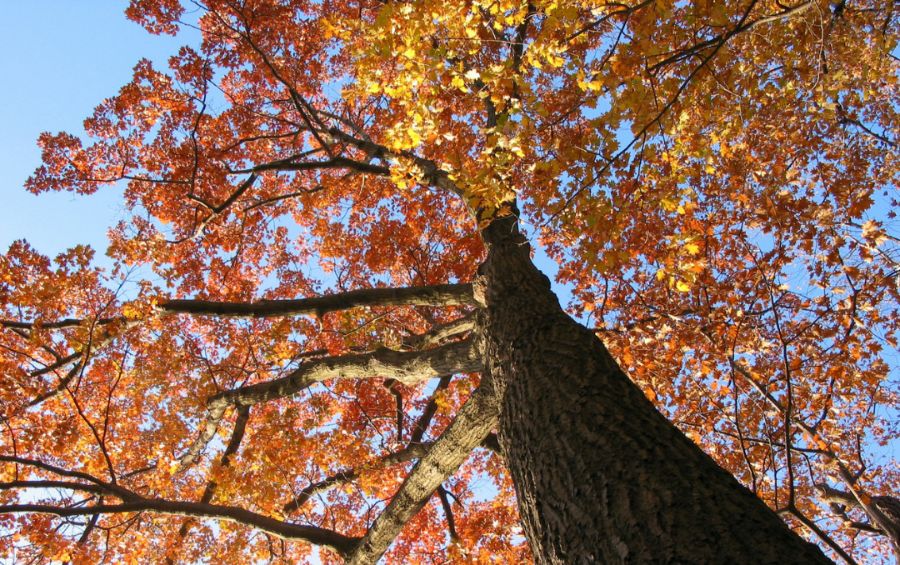
Coniferous Trees Species: Evergreen Wonders Amidst Fall Splendor
Coniferous Trees are known for their evergreen needles, which stay green throughout the year. Chlorophyll from pine needles doesn’t deplete in the same way it does in leaves from deciduous tree species, allowing the needles to stay a deep green color year-round. These evergreen trees are well known for making their way into living rooms across the country each winter as festive decorations.
However, some coniferous species exhibit unique fall coloration. For instance, Bald Cypress is a unique deciduous conifer tree known for its distinctive appearance, with needle-like leaves that turn a beautiful reddish-brown in the fall before dropping. This leaves behind a bare branch, creating a unique and beautiful fall display.
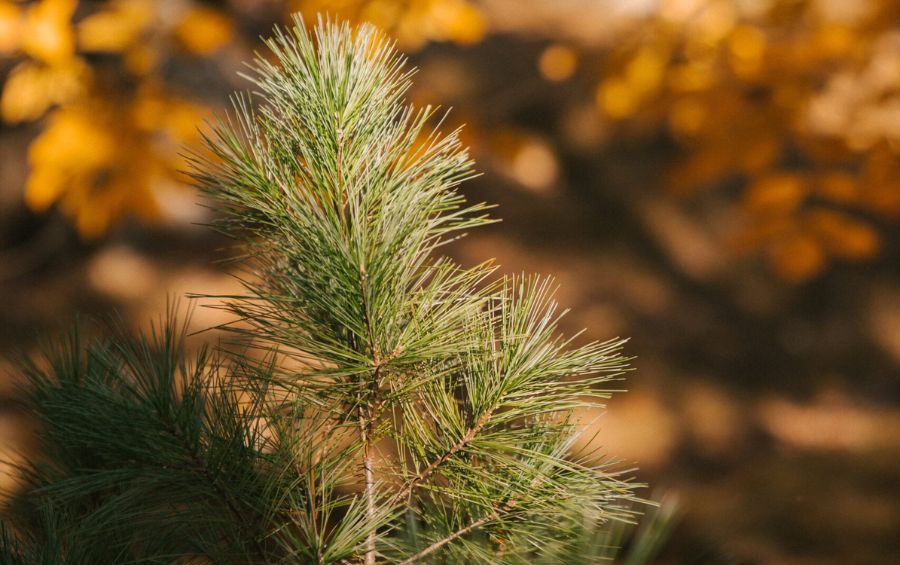
Native Trees: Embracing the Beauty of Regional Flora
The central U.S. is filled with unique native tree species that are known for their captivating fall colors. The red maple, sugar maple, dogwood, birch and hickory trees turn stunning shades of red, orange, yellow and brown, marking the onset of the beautiful fall season.
Iowa, Missouri & Kansas
- Birch: Leaves turn a golden-yellow color
- Hickory: Leaves turn a beautiful golden-yellow color
- American Elm: Leaves turn bright yellow
- Post Oak: Leaves turn golden-brown
Oklahoma & Texas
- Red Maple: Leaves turn a fiery red
- Mexican Plum: Leaves turn a bright orange
- Dogwood: Leaves turn bright red
- Red Oak: Leaves turn brick-red
Non-Native Trees: Bringing Fall Color to your Region
Non-Native trees are species that originate from regions outside their current habitat. These trees are often planted in warm areas for a variety of reasons, including aesthetic appeal, rapid growth and adaptability to local climate conditions. Bringing beautiful fall colors to new areas.
Oklahoma & Texas
- Parrotia Persica: Leaves turn a variety of yellow
- Chinese Pistache: Leaves turn a fiery red
- Japanese Maple: Leaves turn a bright orange
- Ginkgo: Leaves turn a stunning yellow
- Shantung Maple: Leaves turn a combination of yellow and red
How do Things like Drought and Flooding Affect Fall Colors?
Fall colors are one of nature’s most beautiful displays, but they do not always appear as expected. Unhealthy environmental conditions can significantly affect how vivid or muted the fall colors are. Both drought and flooding impact the appearance of fall colors.
Drought: Altering the Timing and Intensity of Fall Colors
Drought is not uncommon throughout fall and winter, and it can significantly affect the timing and intensity of fall color changes. Trees experiencing a water deficit tend to have an earlier color change than expected. In some cases, drought can also make the colors appear more muted than usual. Drought-induced chlorosis, a condition that affects the trees’ ability to produce chlorophyll, can make fall colors appear yellow or brown instead of the traditional red, orange and gold.
Flooding: An Unexpected Twist to the Fall Color Palette
While not as common as drought, fall flash flooding can cause stress to trees, resulting in early or delayed color changes. Flooding can also lead to a reduction in the number of healthy pigments in leaves, making the colors appear dull and faded. Trees that experience repeated flooding and waterlogging might also experience premature leaf dropping.
Implications for Tree Health and Fall Color Brilliance
Water stress can cause leaves to drop prematurely, which can have severe implications for tree health and fall color brilliance. Premature leaf drops can cause the trees to lose their nutrients and energy reserves early, making them more susceptible to diseases and pests. In some cases, premature leaf drops can also lead to lower overall leaf numbers and reduced photosynthesis, resulting in a less vibrant fall color display.
Early Fall Color: A Sign of Something Gone Wrong
If your trees show fall color change well before neighboring trees, it can be an indicator of problems in the growing environment. There are many environmental stresses that can cause early leaf color change, but the most common include:
- Girdling roots
- Dry, cracking soil
- Excessively wet soil from abundant moisture or poor drainage
- Anaerobic soil caused by poor oxygen availability
- Excessively compact soil
- Roots pruned or compacted by construction or renovation work
- Reflected heat from buildings, sidewalks and other paved areas
- Trunk damage caused by lawn mowers, string trimmers, or natural factors like squirrels or deer. In addition, excessive drought, common in the central U.S., may cause leaves to drop early so the tree can conserve energy and moisture. Trees experiencing early fall color or early leaf drop are under stress and can be easy targets for insects and fungal infections.
If your tree is experiencing early fall color or leaf dropping, we are here to help. Our certified arborists test soil conditions and examine your trees to create a custom care plan. Contact Arbor Masters to help protect your trees for the wintertime so they can bounce back in the spring.
Peak Tree Colors in the Ozarks
The Ozarks is one of the most beautiful regions in the United States to experience the arrival of autumn. Located in Missouri and Arkansas, this region is filled with rolling hills, deep forests and sparkling streams that create a perfect backdrop for fall foliage enthusiasts. The Ozarks is home to a diverse mix of deciduous trees, including oaks, maples, dogwoods and hickories, which provide a spectacular display of colors during the fall months.
The Ozarks: A Haven for Fall Foliage Enthusiasts
The peak of the fall color change in the Ozarks occurs during the last two weeks of October, but it can start as early as mid-September. To ensure you witness the best of the fall foliage, planning a trip to the Ozarks between late September and early November would be ideal. This region is well-known for its beautiful scenery. Because of this, we recommend reserving your accommodation early as the fall season can be remarkably busy.
The Ozark National Forest, Mark Twain National Forest and Roaring River State Park are some popular destinations that should be on every fall foliage lover’s itinerary. These locations offer ample opportunities to witness the beauty of the Ozarks during the fall season. Hiking trails, campgrounds and picnic spots are widely available, allowing for varying preferences and timeframes.
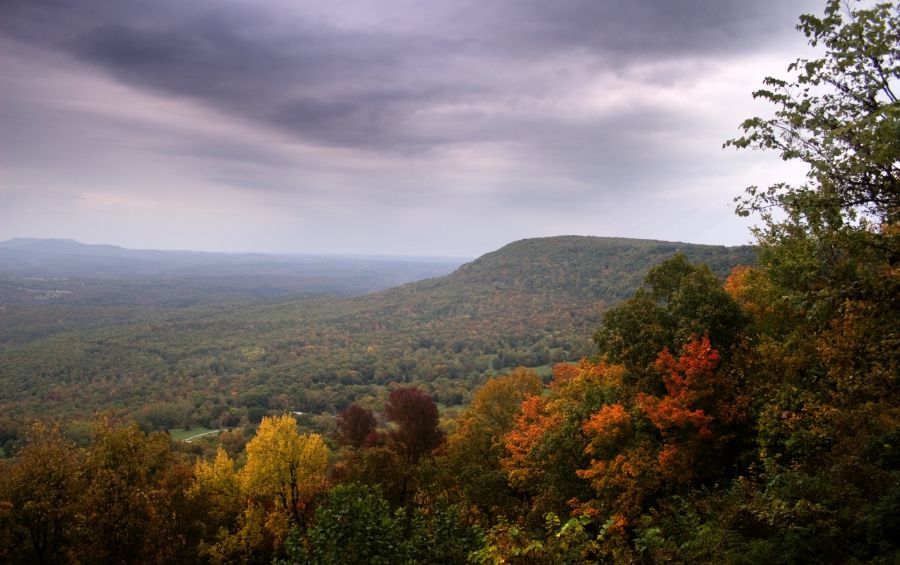
Peak Fall Colors in the Midwest
At Arbor Masters, we are lucky to operate in one of the country’s most beautiful regions during the fall. The Midwest’s unique climate and geography give rise to an array of colorful foliage, making for an unforgettable sightseeing experience.
The terrain and climate of the Midwest give rise to a diverse range of trees that contribute to the beautiful fall color display. Oak, maple, birch, hickory and ash display hues of bright yellow, rich reds and browns, deep purples and vibrant oranges that create a stunning autumnal landscape that is unparalleled.
Across the Midwest, these colors will appear anywhere from late September to early November, depending on weather conditions. If the area has experienced summer and early fall droughts, fall color may happen later in the fall. If the springtime and summer conditions are favorable, without extreme heat and a healthy amount of rain, fall color will appear earlier in October or even September.
As nature unveils its vibrant autumn palette, we are reminded of the beauty and wonder surrounding us. The annual transformation of tree leaves in the fall is not only a visual delight but also a testament to how healthy trees are, with ample access to water and essential nutrients.
At Arbor Masters, we look forward to fall color changes every year. That’s why we work year-round to give your trees the comprehensive plant health care they need to steal the show each fall. Contact us today to see how we can help make your trees the talk of the town this fall.

Want More Like This?
Get the latest local news, tree care tips, special offers, and company updates directly to your inbox! It's easy to subscribe and there's no spam - we promise.
"*" indicates required fields


